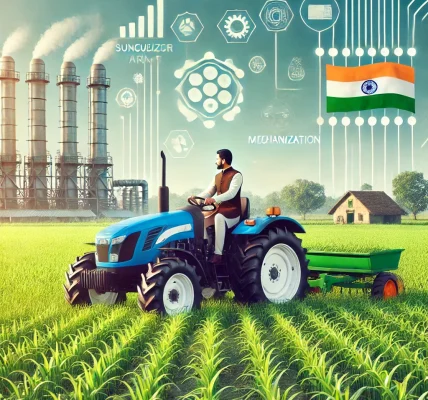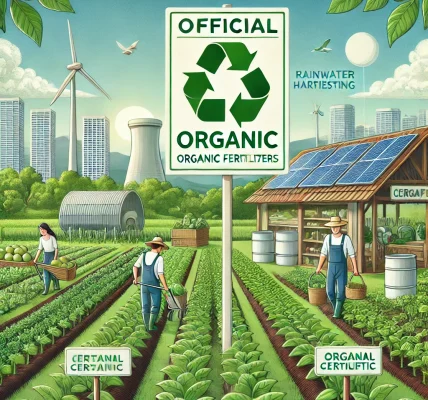Understanding Government Subsidies in Agriculture
Government subsidies are financial aids provided to farmers to reduce production costs and encourage sustainable farming. These subsidies come in different forms:
- Input subsidies (for seeds, fertilizers, pesticides, etc.)
- Machinery and equipment subsidies
- Irrigation and water conservation subsidies
- Market price support subsidies
- Crop insurance and risk management subsidies
- Organic and sustainable farming incentives
By leveraging these subsidies effectively, farmers can significantly increase their profit margins while ensuring long-term sustainability.
Top Government Subsidy Programs for Farmers in 2025
1. Fertilizer and Seed Subsidy Programs
Objective: To provide quality inputs at lower costs.
Benefits:
- Farmers get high-quality seeds and fertilizers at reduced rates.
- Helps improve crop yield and profitability.
How to Utilize It:
- Register with the nearest agricultural office.
- Provide land ownership or lease details.
- Select the eligible fertilizers and seeds under the subsidy program.
- Purchase inputs through government-authorized vendors.
2. Subsidy on Agricultural Equipment and Machinery
Objective: To promote mechanization and reduce labor costs.
Benefits:
- Discounts on tractors, harvesters, and irrigation systems.
- Increased efficiency and productivity.
How to Utilize It:
- Visit the official agricultural subsidy portal.
- Check the eligibility criteria for machinery grants.
- Submit necessary documents, including farm size and ownership proof.
- Receive approval and purchase equipment from authorized dealers.
3. Irrigation and Water Conservation Subsidies
Objective: To promote efficient water use and reduce dependency on monsoons.
Benefits:
- Drip irrigation systems and solar-powered pumps at subsidized rates.
- Encourages water conservation and sustainable farming.
How to Utilize It:
- Identify the most suitable irrigation system for your farm.
- Apply through the agricultural department’s water conservation program.
- Upon approval, install the system with assistance from government-certified vendors.
4. Crop Insurance and Risk Management Programs
Objective: To protect farmers from crop failure due to natural calamities.
Benefits:
- Financial support in case of crop loss.
- Encourages farmers to take calculated risks in farming.
How to Utilize It:
- Choose a government-approved crop insurance scheme (e.g., Pradhan Mantri Fasal Bima Yojana).
- Pay a minimal premium.
- In case of loss, file a claim with proper documentation.
5. Organic Farming and Sustainable Agriculture Incentives
Objective: To promote eco-friendly farming practices.
Benefits:
- Financial assistance for transitioning to organic farming.
- Access to premium markets with higher profit margins.
How to Utilize It:
- Register for the organic farming subsidy.
- Follow the guidelines for organic certification.
- Avail financial support for organic fertilizers and pesticides.
Strategies to Maximize Profits Using Subsidies
1. Plan Crop Selection Wisely
- Choose crops with high demand and government support.
- Utilize seed subsidies for high-yield and disease-resistant varieties.
2. Use Subsidized Machinery to Reduce Costs
- Apply for machinery subsidies to reduce labor and production costs.
- Rent subsidized equipment through government-run farm service centers if purchasing is not feasible.
3. Leverage Government Market Support Programs
- Enroll in Minimum Support Price (MSP) programs.
- Utilize government procurement schemes for direct sales.
4. Diversify Income Sources
- Use government subsidies to start beekeeping, poultry farming, or aquaculture.
- Invest in value-added agriculture (processing and packaging).
5. Invest in Renewable Energy Solutions
- Apply for solar pump subsidies to reduce electricity expenses.
- Use biogas subsidies to generate energy from farm waste.
6. Stay Updated on New Subsidy Programs
- Regularly check official agricultural websites.
- Attend government-run agricultural workshops and training sessions.
Conclusion
Government subsidies are valuable tools for farmers to increase profits and ensure financial stability. By understanding the available subsidies, applying strategically, and using them effectively, farmers can optimize their earnings and contribute to sustainable agricultural growth.
If you are a farmer, take the first step today by checking which subsidies you qualify for and applying through the proper channels. A small effort now can lead to significant financial gains in the long run!
For more insights on government agricultural programs, stay connected with our platform!




